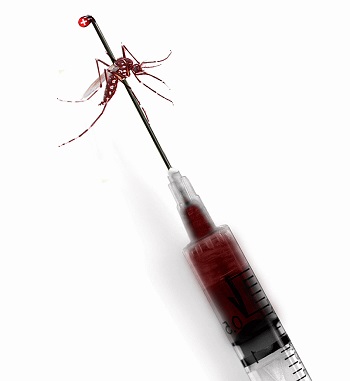
A research team based at The Rockefeller University has identified a potent new weapon against the Zika virus in the blood of people who have been infected by it. This discovery could lead to new ways of fighting the disease. Detailed examination of the interaction between the virus and antibodies derived from human subjects in Brazil and Mexico, including crystallographic studies performed at the Stanford Synchrotron Radiation Lightsourse (SSRL), have revealed a new potential strategy for developing a vaccine towards this virus.
Through collaborators working in Pau da Lima, Brazil, and Santa Maria Mixtequilla, Mexico, the research team obtained blood samples from more than 400 people, collected shortly after Zika was circulating (Figure 1).
In these samples, antibodies that block the virus from initiating an infection were found. Interestingly, the antibodies appeared to have been initially generated in response to an earlier infection by a related virus (DENV1) that causes dengue fever. It appears that, much like a vaccine, the DENV1 virus can prime the immune system to respond to Zika.

Figure 1. Blood samples were collected from areas where Zika was circulating, including Santa Maria Mixtequilla, Mexico. (credit: Gustavo Reyes-Teran)
Zika is a mosquito-borne virus which usually causes mild symptoms in those who contract it. However, dramatic effects can appear in the next generation. Babies born to women infected during pregnancy are at risk of devastating neurodevelopmental abnormalities. The only way to prevent Zika is to avoid mosquito bites, since there are currently no vaccines or other medical measures. Zika is classified as a flavivirus, a genus which also includes yellow fever, West Nile virus and dengue virus, and all of these viruses contain a surface envelope protein (E), comprising three domains (EDI, EDII and EDIII). Antibodies raised against the EDIII domain of the flaviviruses are among the most potent at neutralizing the viruses. Moreover, since the EDIII domains of the various members of the family are structurally similar, cross-reactivity of the antibodies leads to significant cross-protection, which may be why the antibodies to dengue fever discovered in Brazil and Mexico are active against Zika.

Figure 2. The crystal structure of Z006 Fab bound to Zika EDIII antigen was solved to 3.0 Å resolution. The antibody binds to the lateral ridge of ZEDIII, an interaction distinct from previously solved Ab-Zika EDIII complexes. The Fab HC is shown in blue, the LC in cyan, and the ZEDIII in black.
Prof. Pamela Bjorkman and scientists in her laboratory at Caltech determined the molecular structure formed between Zika and dengue EDIII proteins, and the neutralizing antibodies from two different human donors (Z004 and Z006). Data were collected at SSRL beam line BL12-2 from crystals of Zika EDIII and the Z006 antibody (the ZEDIII-Z006 complex) and dengue EDIII and the Z004 antibody (the DENV1 EDIII-Z004 complex), both to 3.0 Å resolution. The ZEDIII and DENV1 EDIII structures are themselves very similar, and when the complexes are superimposed based upon the EDIII proteins, it was observed that the two antibodies bound in roughly the same orientation. Detailed analysis of the structures revealed that the antibodies “pinch” a ridge on the EDIII proteins when they bind (Figure 2). Despite the two antibodies having originated from different donors, they make interactions with the two EDIII proteins in a very similar way, recognizing epitopes that are remarkably similar.
While some efforts to develop a vaccine use all or most of the virus to stimulate the immune system, the research team led by Dr. Robbiani believes that focusing the immune system toward the ridge of the EDIII would result in a more effective vaccine.
D. F. Robbiani, L. Bozzacco, J. R. Keeffe, R. Khouri, P. C. Olsen, A. Gazumyan, D. Schaefer-Babajew, S. Avila-Rios, L. Nogueira, R. Patel, S. A. Azzopardi, L. F. K. Uhl, M. Saeed, E. E. Sevilla-Reyes, M. Agudelo, K.-H. Yao, J. Golijanin, H. B. Gristick, Y. E. Lee, A. Hurley, M. Caskey, J. Pai, T. Oliveira, E. A. Wunder, Jr., G. Sacramento, N. Nery, Jr., C. Orge, F. Costa, M. G. Reis, N. M. Thomas, T. Eisenreich, D. M. Weinberger, A. R. P. d. Almeida, A. P. West, Jr., C. M. Rice, P. J. Bjorkman, G. Reyes-Teran, A. I. Ko, M. R. MacDonald and M. C. Nussenzweig, "Recurrent Potent Human Neutralizing Antibodies to Zika Virus in Brazil and Mexico", Cell 169, 597 (2017) DOI: 10.1016/j.cell.2017.04.024.




